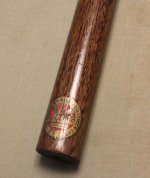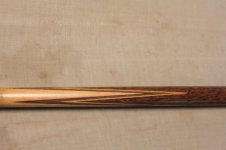I am hoping that i could get a little more info about this cue ive picked up recently /age /what type of wood the butt is / was it common for these to have ivory ferriuls cause this one does /the time line for brunswicks stickers they used on the titlist cues .its headed for a wrapless conversion but im just wondering about its origin
thanks Andy
thanks Andy

